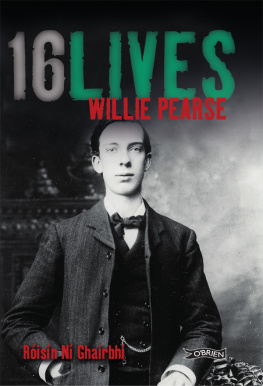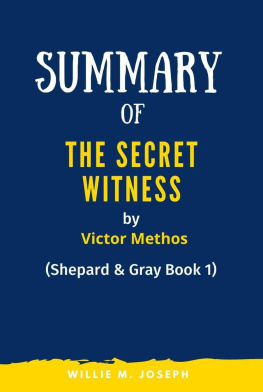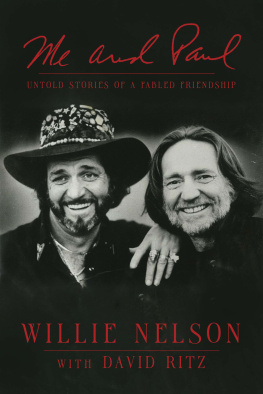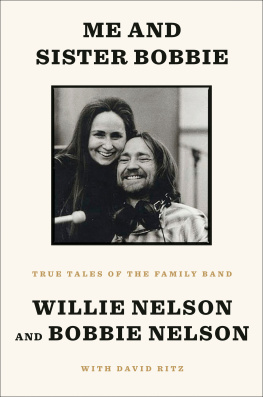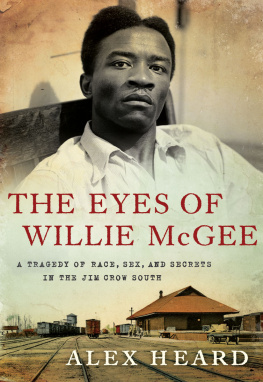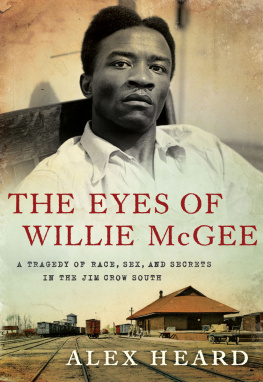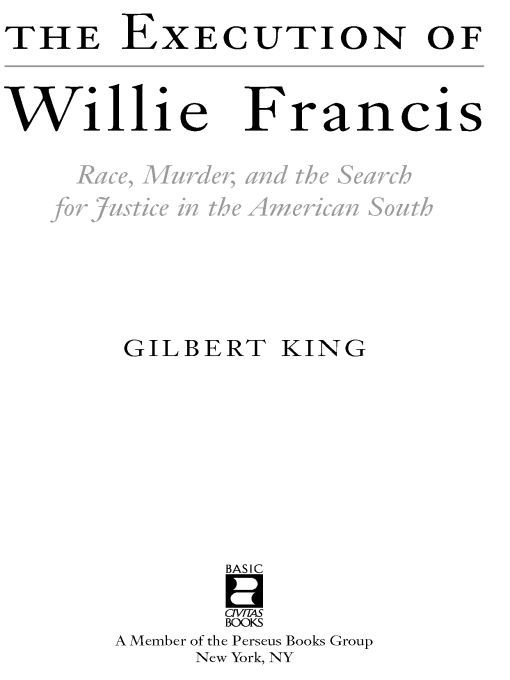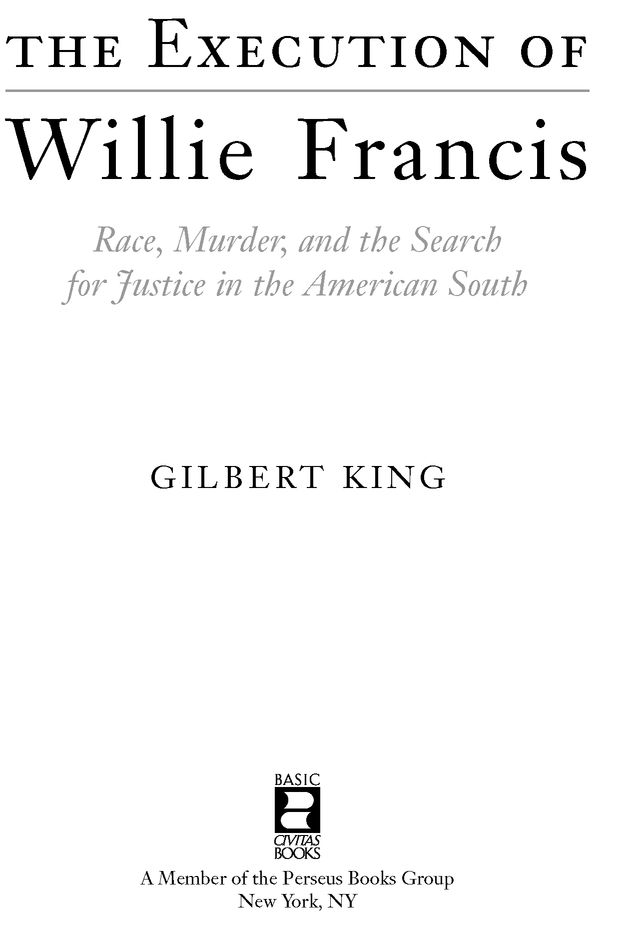Table of Contents
In Memory of
Susan Marie King
and for
Emily Rose King
After the first death, there is no other.
DYLAN THOMAS
PROLOGUE
the curse of st. martinville
So I had it after all the months. For nothing is lost, nothing is ever lost. There is always the clue, the canceled check, the smear of lipstick, the footprint in the canna bed, the condom on the park path, the twitch in the old wound, the baby shoes dipped in bronze, the taint in the blood stream. And all times are one time, and all those dead in the past never lived before our definition gives them life, and out of the shadow their eyes implore us.
ROBERT PENN WARREN,
All the Kings Men
Before I left on my first research trip to St. Martinville, a sleepy Acadian (Cajun) town in southwestern Louisiana with a population of just a few thousand, people familiar with the community told me to expect a whole different world. Id been poring over countless books on the region, including Sister Helen Prejeans Dead Man Walking, and had noted the authors surprise on the second page when she was told that Elmo Patrick Sonnier, the condemned man in her story, was a Cajun from St. Martinville. As Sister Helen herself had found the town to be, in her words, one of the friendliest, most hospitable places on earth, she observed that if murders were prone to happen anywhere, this is the place one would least expect.
Once I arrived, it didnt take very long for me to discover that St. Martinville, the oldest settlement in an area known as Acadiana, had not changed much over the years. The pictures Id seen of Main Street in the 1940s looked very much like the Main Street of St. Martinville today. In the center of town the Italianate and Greek Revival architectural treasures that surround St.-Martin-de-Tours Catholic Church are pleasing reminders that St. Martinville was once known as le petit Paris. Not far from the church, along the Bayou Teche, stands the Evangeline Oak, immortalized by Henry Wadsworth Longfellow in his epic poem Evangeline: A Tale of Acadie. The tree has long been recognized as the symbol at the heart of Cajun culture.
The people of St. Martinville love to talk, even to strangers, and I found myself spending entire afternoons in the company of some of the friendliest, most hospitable people Ive ever met. Yet something struck me as odd about many of my encounters. I would tell people I was working on a book about an old murder case in St. Martinville, and invariably they would ask if it was about Patrick Sonnier.
No, Id say, Willie Francis.
The name was met with blank stares, which were usually followed by never heard of him. On a visit to the former New Iberia Parish jail, which is now used to store files above the New Iberia courthouse, the maintenance man giving me the tour inquired if I was ready to see Sonniers cell. (Sonnier was later executed in the same electric chair that Willie had walked away from nearly forty years earlier.)
Sure, I told him, then asked if I could also see the cell that had held Willie Francis.
Who?
It was as if the idea of another infamous murder in these parts was incomprehensible. It wasnt until I began talking to some of the older folks in St. Martinville, people who had been around during the 1940s, when the State of Louisiana sent the Negro teenager to the electric chair, that I began to get nods of recognition. With these folks, the name Willie Francis resonated. And time and again the responses I received were the same: Willie Francis didnt kill anyone, or There are people in St. Martinville today who know what really happened, or That boy was innocent.
The people in St. Martinville who shared these responses with me were priests, morticians, farmers, teachers. Some were black; others were white.
Willies own version of the story was elusive, as he did not take the stand at his trial. A pamphletMy Trip to the Chairthat he had written in 1947 to raise money for his U.S. Supreme Court appeals was proving impossible to find. In it, Willie was purported to have described, in his own words, the events leading up to, during, and just after he survived his own execution. I had spoken to people who had seen the document, and Id contacted countless universities, research centers, and private collectorsall to no avail. The only known copy had been catalogued in a file of rare African American pamphlets at the Library of Congress in Washington, but it had been missing for almost two decades. Nearly every month for three years during the writing of this book I called the Library of Congress, hoping that somehow, against all odds, the file would turn up. One afternoon, with my deadline fast approaching, the telephone rang. It was Patrick Kirwin from the Library of Congress.
Are you still looking for that Willie Francis pamphlet?
Within hours, I had a copy in my handsthe holy grail of Willie Francis research that I had all but given up onand the document would now allow me to present not only eyewitness accounts of Willies botched execution but Willies own account of that fateful day in St. Martinvillein Willies own unmistakable voice. I wonder if I will ever get to read the thing, Willie wrote. The document would also provide and confirm a telling detail in the murder that would send Willie Francis to the electric chair.
I thought back to a story told to me by James Akers, St. Martinvilles unofficial town historian, caretaker of the Acadian Memorial, and, he claims, the only white person at the funeral of Willie Francis. It was my first day in town, and we were standing in Akerss office on South New Market Street overlooking the Teche, with the Evangeline Oak overhead. The sun was just beginning to set, and Akers didnt appear to be in a rush to go anywhere. A tall, gangly man with gray hair, a beard, and a Cajun accent that belied his Norwegian descent, Akers attempted to recall memories of the name that had been all but forgotten in this town where almost everyone, black and white, spoke French.
Willie Francis, he said, sighing. Willie Francis. That was a shame. Of course, that wasnt the first time. Something like thats happened here before.
The Cajuns have a word for it. Corrompre. Corrupt. It was a dirty town, Id been told.
If you go into that courthouse there, look up the name Isabelle Robertson, Akers said. Happened in August of 1891, in that pretty white house on the corner. Thats where Mrs. Robertson lived with her daughter. One morning they found both bodies. Theyd been stabbed and choked to death.
Akerss eyes widened. Many months later the sheriff arrests a black man by the name Louis Michel. They took Mr. Michel behind the courthouse under a big oak tree, just like the Evangeline. Thirteen steps up the scaffold, theres rope waiting for him. The sheriff reads the death warrant and asks Mr. Michel if he has any last words. Michel says he does. He says, You remember that night you came to hang me? I was hiding under the house with my Winchester rifle and I could have killed three or four of you but didnt because, being innocent, I fear no man. Then he looks into the crowd and says, There are people looking at me now who know I am innocent. I did not kill anyone. But no one in the crowd said a word. Because of their silence, Mr. Louis Michel had one more thing to say. He put a curse on St. Martinville. Cursed the town so that it would not prosper, and grass would grow in the streets.


